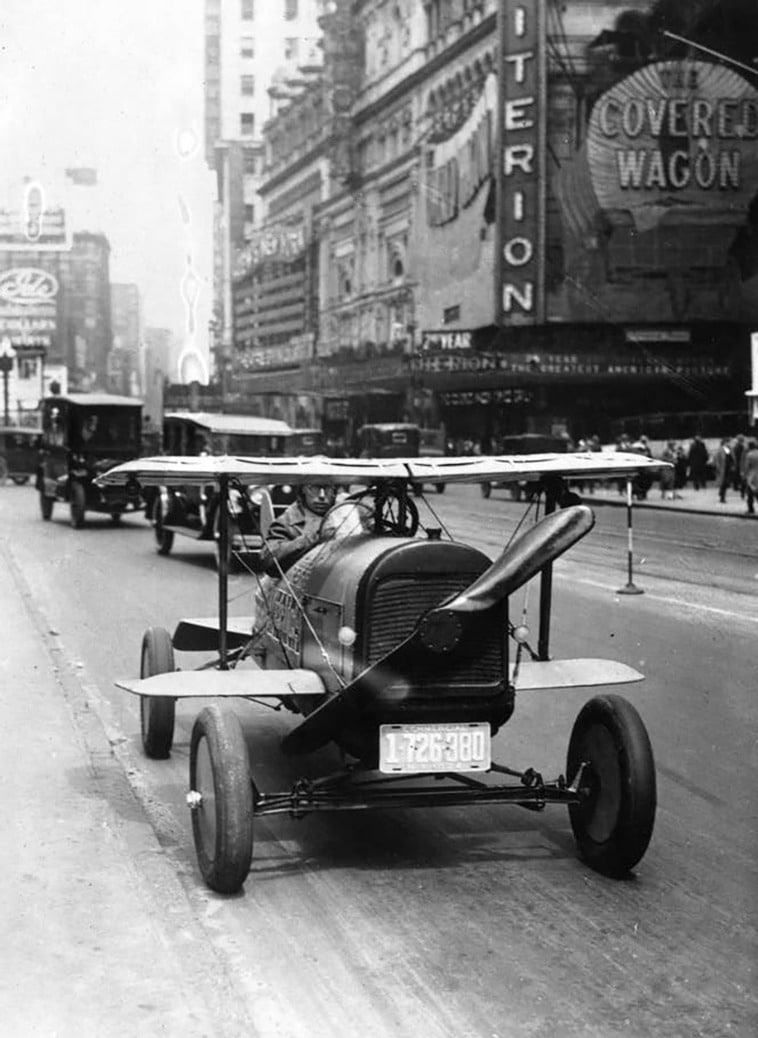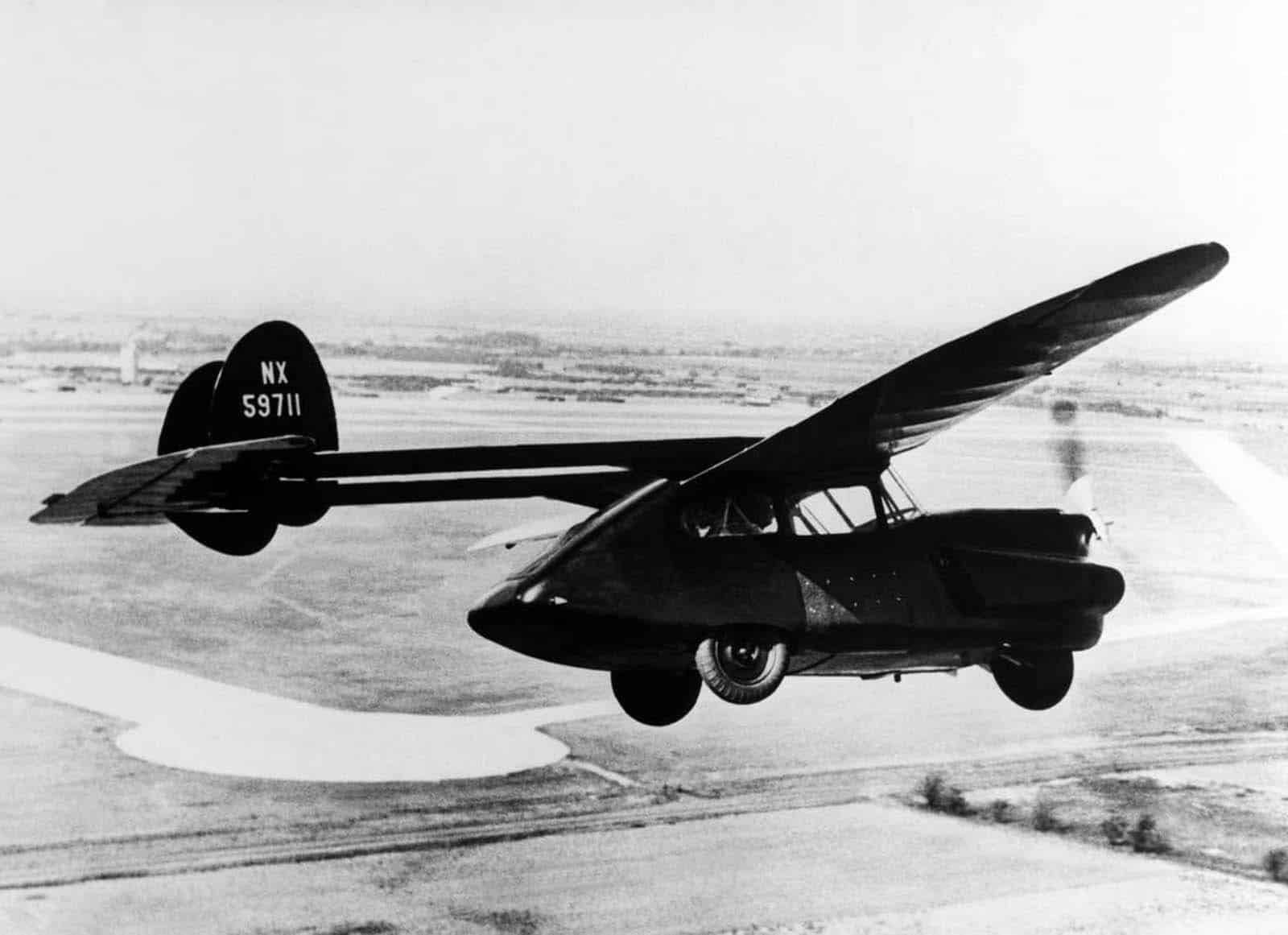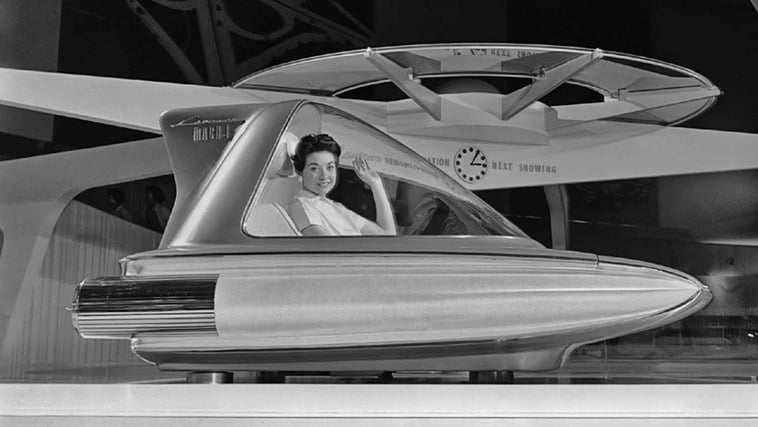The History Of Flying Cars Through Rare Photographs, 1920-1970
Since the invention of the car, people have dreamed of making it fly. The idea of a flying machine that can also be driven dates back to the nineteenth century. Engineers revisited this idea numerous times throughout the twentieth century.
Nearly 80 patents have been filed at the United States Patent and Trademark Office for various types of flying cars, though only a few have actually flown. Despite huge efforts, most have not been mass-produced.
Keep scrolling to explore the evolution of standout flying cars 1920-1970 through captivating photos.
Notable flying cars of the time
1921 Tampier Autoplane

In France, René Tampier showcased a unique prototype: a combination of an airplane and a car that intrigued spectators. However, a challenge arose while driving—the airplane’s tail obstructed the view ahead!
The pilot had to turn around and fold down the wings to make the vehicle suitable for roads. This prototype was the only one ever made and later ended up in a museum because of reliability issues.
1925 Skroback Roadable Airplane

The Skroback Roadable Airplane, an early attempt at a vehicle that could both drive on roads and fly, used multiple wing surfaces to fit within road width limits. Frank E. Skroback, drawing inspiration from French designs, completed his prototype in 1934.
It featured three pairs of short biplane wings, rudders for flight control, and was powered by a Continental A-40 engine. Initial tests in 1945 revealed ground control issues.
After being stored, it underwent further testing in 1957 in New York and Maine. Eventually sold in 2010 for $66,175 at an auction in Atlanta, Georgia.
1937 Arrowbile

In 1937, Waldo Waterman developed the Arrowbile, a hybrid vehicle combining a Studebaker car with aircraft capabilities. Similar to the Autoplane, it featured a rear-mounted propeller.
The three-wheeled car was powered by a standard 100-horsepower Studebaker engine. Its wings were detachable for storage convenience. Unfortunately, lack of funding led to the project’s demise.
1946 Airphibian

Robert Fulton, a distant relative of the steam engine inventor, created the Airphibian in 1946. Unlike adapting a car for flight, Fulton modified a plane for road use. The wings and tail section could be detached for road travel, and the propeller could fit inside the plane’s fuselage.
Converting the plane into a car took just five minutes. Certified by the Civil Aeronautics Administration, the Airphibian had a 150-horsepower engine, reaching speeds of 120 mph in the air and 50 mph on the ground.
Despite its achievements, Fulton struggled to secure stable financial backing for the project.
1940s ConvAirCar

In the 1940s, Consolidated Vultee Aircraft (later renamed Convair) was designed as a two-door sedan with a detachable airplane unit.
Known as the ConvAirCar, it debuted in 1946, offering an hour of flight time and achieving 45 miles (72 kilometers) per gallon of gas. However, plans to market the car were halted after it crashed during its third flight.
1950s Avrocar

The first flying car designed for military use was the Avrocar, created by John Frost, a product designer at Avro Canada, in the 1950s. This flying-saucer-shaped vehicle was envisioned as a supersonic fighter-bomber aircraft capable of vertical takeoff and landing (VTOL).
The United States Air Force agreed to finance its further development in 1957, but the Avrocar ultimately failed to perform as originally planned.
1957 Aerocar

Inspired by the Airphibian and his acquaintance with Robert Fulton, Moulton “Molt” Taylor created what’s considered the most famous flying car ever. The Aerocar could seamlessly drive on roads, take to the skies, and then drive again, all in one go.
Taylor built the car with a sturdy fiberglass shell and powered it with a 10-foot-long drive shaft connecting the engine to a rear propeller. It could fly at speeds up to 120 mph (193 kph) and became only the second roadable aircraft approved by the FAA.
In 1970, Ford Motor Co. looked into marketing the Aerocar, but plans were scrapped due to the oil crisis of the time.
Compelling photos of flying cars over time
1. The 1923 Pitcairn PCA-2

2. The invention of A.H. Russell of Nutley in 1924

3. A flying car invented in 1924

4. A combined car, boat, and airplane 1928

5. A Texan flying auto 1946

6. The ConvAirCar featured a 130-horsepower engine in 1946

7. The 1947 ConVairCar Model 118

8. A crashed ConvAirCar 1947

9. The 1948 Airphibian flying car

10. An unconventional American car adapted from the fuselage of a light aircraft in 1948

11. Moulton Taylor’s Aerocar 1957

12. The 1959 Ford Levacar

13. The 1966 Aero-Car

14. The 1971 AVE Mizar


